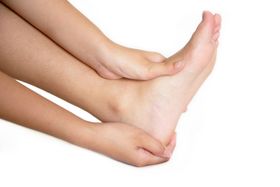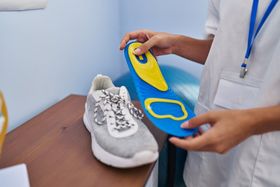Do Orthotic Insoles Work for Heel Pain?
Updated December 18, 2024

Heel pain is the common complaint of individuals affected by most foot conditions. There are various causes of heel pain, such as:
- Calcaneum heel spurs
- Plantar fasciitis
- Overuse injuries
- Achilles tendonitis
- Sprains and strains
- Fractures
- Bursitis
- Arthritis
- Ankylosis spondylitis.
- Altered foot biomechanics from occupation or incorrect footwear use
It is important to get yourself diagnosed by a healthcare practitioner like your physical therapist to know the exact cause of the heel pain and accordingly seek the right treatment.
Can Heel Pain Be Prevented?
Prevention is always better than cure, and heel pain can be prevented by taking the necessary care.
Firstly, it‘s important to have a good lifestyle and include a good amount of physical activity in your routine as a preventative measure from heel pain or any other impairments. It is essential to have a good balance between activity and rest. Making sure none of your daily life routines are overdone.
Simple physical activity, such as walking, can help prevent heel pain and maintain the current health of your feet. Although, it is important that while walking, you use the correct footwear as poorly designed footwear can lead to imbalances in your foot biomechanics and arch support, doing more harm than if you were barefoot.
Can Heel Pain Be Treated?
Heel pain can be very well treated conservatively post consultation with your healthcare practitioner.
I wouldn’t suggest going directly for home remedies without knowing the exact cause of your heel pain. That being said, you can perform some home remedies immediately after the pain begins and once you know the reason for it. Some of the easiest home remedies include:
- Resting your feet.
- Avoiding any activities that aggravate your pain.
- Use of ice.
- Wearing the correct footwear.
Heel pain decreases and completely heals depending upon the cause. In the case of plantar fasciitis, the most common cause of heel pain, it takes about 6 to 18 months. Other conditions, such as a strain, take a few days to a few weeks to heal.
It is essential to see your doctor if your pain doesn’t subside after carrying out the home remedies or suffering from excruciating pain; inability to move, stand, and walk; swelling of the ankle; redness; and warmth at the ankle and heel.
What Are the Best Insoles for Heel Pain?
Arch support is often needed in cases of heel pain as altered foot biomechanics and increased, or decreased, arch of the foot are among the most common contributing factors causing discomfort.
There are different types of insoles available in the market. As for custom orthotics vs. insoles, it is important to get one custom-made to cater to your individual need and foot posture, instead of going for the over-the-counter insoles that are generic and, in most cases, do not help as much as they promise.
There are gel-based and memory foam insoles available. Both have their pros and cons; however, both are good at catering to different needs. Memory foam insoles are light insoles generally used for daily activities like walking, whereas gel-based insoles are used for shock absorption during high-intensity activities such as various sports.
» Ready to reduce discomfort? Check out the best insoles for heel pain
Are Custom Orthotics Worth It for Heel Pain?
Custom orthotics for heel pain relief can aid in the recovery process from the majority of foot conditions along with your physical therapy treatments since the biomechanics of feet are interdependent with most foot conditions and pain. Hence, custom orthotics will help improve the ideal foot mechanics and give your body a chance to heal itself.








